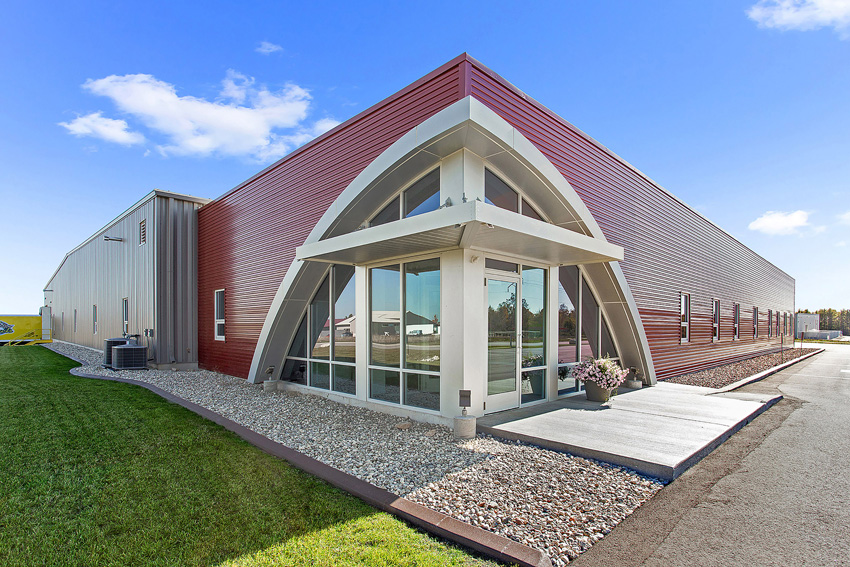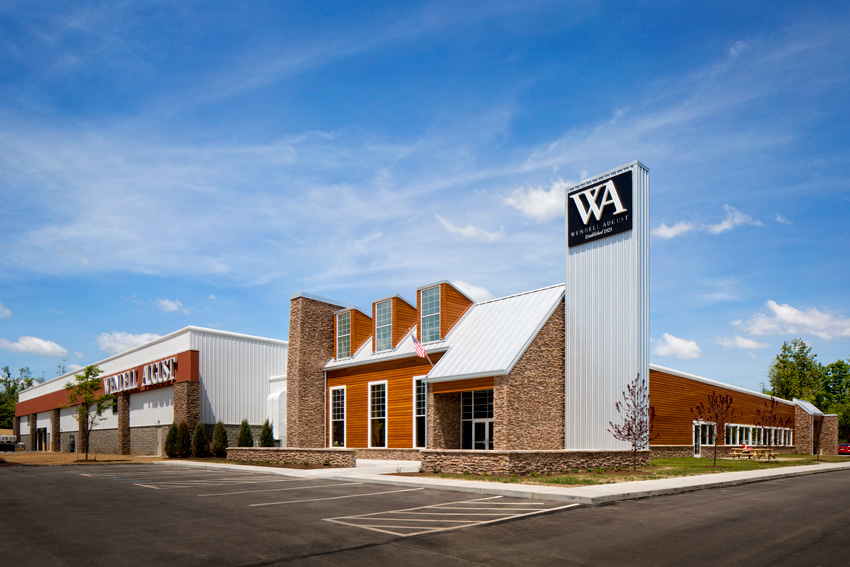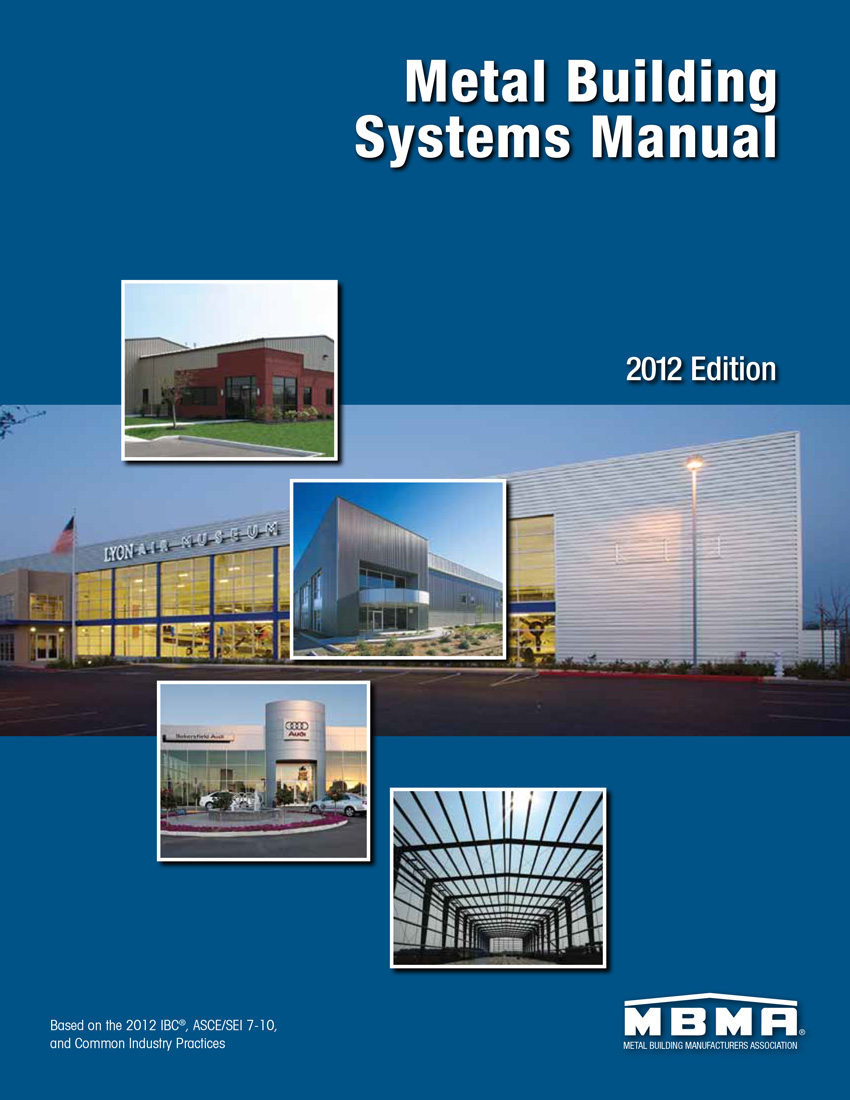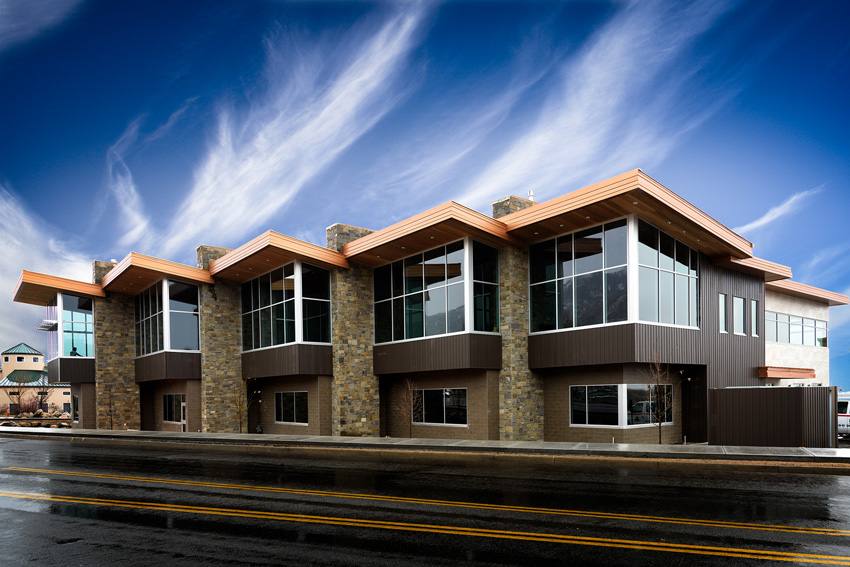Specifying the Latest in Metal Buildings
Integrated Design and Construction Considerations
For many decades, the traditional method for delivering a project to an owner (i.e., providing the design, fabrication, and construction of a building) has been notably fragmented and often inefficient. Many design, construction, and building owner groups have recognized this issue, which has led to a growth in alternative forms of project delivery. Design-build is one alternative approach that has become popular in many parts of the country and may be suitable for some metal buildings. However, design-build is not always practical, and there are legal implications depending on the state where it is practiced. Regardless, finding ways for designers, contractors, and fabricators to work together has long been seen as a positive and beneficial aspect of working with a single-source metal building company.
The American Institute of Architects (AIA) recognizes and promotes integrated project delivery (IPD) that provides an alternative project-delivery approach as a means for all stakeholders (owner, design professionals, constructors, fabricators, suppliers, etc.) to share in the success of a project together. It is based on mutual trust and collaboration, with all parties coming to the table from the outset of a project to provide input and expertise from their respective fields. When the project is successfully carried out, everyone benefits and shares in the financial rewards. If there are challenges, then everyone contributes toward solutions and shares the financial risks.
Metal building projects are well suited for IPD and other types of collaborative project delivery. At the first formative stages of a project, the architect, owner, and consulting engineers can identify and work with a metal building manufacturer based on qualifications and availability in a particular geographic area. Note that many metal building manufacturers will typically require the use of their own proprietary contracts and ordering documents as part of any other contractual relationship since they are tailored specifically for the metal building industry. That is quite workable as long as everyone is able to review and incorporate them into the overall multilateral agreements. This is part of the expertise that the manufacturer can bring based on its proven means to capture all pertinent metal building related information, contributing significantly to a complete and accurate transfer of information for the project.
The benefits of this type of collaborative approach to the design team are numerous. It begins with a fully integrated design and construction team being at the table sooner (i.e., during the design stage) and made up of all parties to provide input, expertise, and informed decision making. This means that the design and construction process can be concurrent and multilevel rather than limit itself to a process that is only linear. Communications between all parties throughout the process is typically based on 2-D and 3-D digital documentation and other computerized processing for full coordination and integration of all building systems and components. Risk in all its forms is collectively managed and appropriately shared, meaning that team success is directly tied to project success.

Photo courtesy of the MBMA
By using a collaborative approach to project delivery, innovative designs can mix with efficient construction to meet the needs of the building owner and occupants.
How does this play out in a typical building project? During design, the information being input into a computer model is based on actual, not prototypical, parameters. This virtual “building” of the project means that details at the level of fabrication drawings can be input, thus eliminating the need for shop drawing reviews later. This would apply to the structural steel system and all building enclosure systems selected, such as walls, roofing, siding, openings, etc. As soon as the building structure is designed, then the foundation design can be finalized, allowing site and concrete work (separate from the metal building package) to begin sooner—all while details of the metal building package are being finalized and fabricated. The scheduling of the delivery and assembly of the metal building package can then be finished, while an approved metal building contractor/erector can prepare to provide the on-site work needed.
At this point, all of the following construction can take place as part of the metal building package to efficiently erect the structure and assemble the components that make up the building:
- Structural steel erection, including primary columns, beams, bents, etc., plus secondary members, including purlins, girts, bracing, etc.;
- Metal roofing system, including roof panels, clips and purlins, insulation, flashing, opening accessories, and all other related elements;
- Exterior wall system, including wall panels, exterior siding, girts (if applicable), insulation, and air and water barriers (depending on the specific wall system);
- Windows and other glazing, including translucent roof or wall panels;
- Doors including personnel and non-personnel doors;
- Rain gutters and downspouts; and
- Accessories and add-ons, such as louvers, roof ventilation, curbs, solar panels etc.
When it comes to assuring quality control for on-site contractors, a fairly recent program spearheaded by the Metal Building Contractors & Erectors Association (MBCEA) in consultation with MBMA members is worth noting. Similar to the previously mentioned AC472, a separate accreditation is available for the contractors that do the field assembly and erection of metal building packages. Referred to as IAS AC478: Accreditation Criteria for Inspection Practices of Metal Building Assemblers, this program addresses on-site quality management, system review, and inspections. To achieve accreditation, contractors must demonstrate that they have the personnel, organization, experience, knowledge, management procedures, and commitment to assemble metal building systems in accordance with specified requirements. The accredited companies must also comply with a documented safety and training program and are subjected to periodic job-site inspections from independent auditors as well as IAS examiners to verify continued compliance with the AC478 criteria.
Once an accredited contractor has installed the full metal building package, the remaining work can be completed by other selected contractors or subcontractors as needed. This work can include exterior finishes and trim that are not based on metal components (i.e., masonry, EIFS, etc.), interior partitions and separations, and all mechanical, electrical, and plumbing work within the enclosed building. The project can then be completed with interior finishing work for walls, floors, and ceilings.

Photo courtesy of the MBMA
An IAS-accredited metal building manufacturer can provide all of the structural and building enclosure portions of a custom-designed metal building, while an IAS-accredited contractor can erect and assemble that building on-site.
Overall, the integrated collaboration with a metal building manufacturing company allows for a complete building enclosure using a streamlined design and construction process. Following through on the rest of the project allows for better coordination of the work that precedes it, comes after it, or is completed concurrently. This has been shown repeatedly to save time and expense for a building. Achieving better control of both benefits everyone involved.
Specifications For Metal Building Systems
With a good understanding of the characteristics and capabilities of metal buildings, it is important to remember that the design team still needs to design the building and specify the systems, just as in any construction project. The design and layout will be directed by the talent and expertise of the design team and be fully informed by input from the other stakeholders. The specifications will need particular attention to detail to assure that everything is properly thought through and coordinated. Fortunately, when specifying metal buildings, many components can be consolidated into a single specification section instead of multiple sections for structure and enclosure. This simplifies the process for spec writers, contractors, and suppliers and also allows for greater focus on coordination. In a standard CSI or Master Spec format, the usual location to include this spec is in Section 13 34 19 – Metal Building Systems.
When assembling the information to prepare the specifications, there are some excellent reference materials available. One of the best is the latest edition (2012) of the MBMA Metal Building Systems Manual, which provides very detailed and comprehensive information for designing and specifying metal buildings. This publication is based on extensive experience within the metal building industry, making it very relevant and focused on the particular items that need to be addressed for successful metal building projects. In particular, Chapter IV – Common Industry Practices is often referred to and cited for overall and specific coordination and administration of the work. This manual may be available from a local metal building manufacturer rep or installer, or it can be ordered directly from the MBMA. There are also standard performance specifications that the MBMA offers as a free download for both metal buildings and metal roofing systems (www.mbma.com/Performance_Specifications.html). Having these resources available and referring to them in the preparation of specifications for a project can be invaluable for the information provided and the potential for time savings.

Photo courtesy of the MBMA
The Metal Building Systems Manual is an excellent resource for designing and specifying metal buildings.
Based on the above, some of the relevant items to address in a standard three-part specification format are highlighted in the following sections.
Part 1: General
This is the place to provide the general criteria for the metal building package. Keep in mind, however, that each manufacturer has some specific common practices, standard part profiles, and details relevant to their particular system. Hence, if a specific manufacturer has not been selected, then it’s better to provide general performance criteria that can be flexible to accommodate differences or alternatives between manufacturers. If a specific manufacturer has been selected, then coordination with their particular system can be stated and specified accordingly.
Description of the Metal Building System
This is intended to be the place to provide a summary for the particular project being specified. As such, it should provide a short overview of the types of things included in the specification section. This can include the type of structural frame, including primary and secondary framing elements, lateral bracing, wall and roof systems, accessories, and pertinent building size and shape references, either in summary or by referring to architectural and engineering drawings.
Related Specification Sections
Since the metal building system will need to be coordinated with work by other trades, the related sections that may be impacted should be called out here. This could include things like concrete work for foundations where structural steel is supported or requires anchor rods, leveling plates or grout. Related sections could also include any metal components, doors, windows, skylights, or joint sealing provided by others that interact with the metal building. Finish painting of metal surfaces by other trades and underground drainage piping should also be identified where applicable.
Referenced Standards
There are many recognized standards that apply to the various aspects of a metal building package. Some are based on the latest referenced standards in the International Building Code, and others are simply recognized by the metal building industry. For a complete list of applicable standards, see the MBMA Metal Building Systems Manual or the Performance Specifications. Then only reference the ones that are actually relevant to the specification section being written.

Photo courtesy of the MBMA
All of the general requirements for a metal building should be included in Part 1 of a standard three-part specification.









